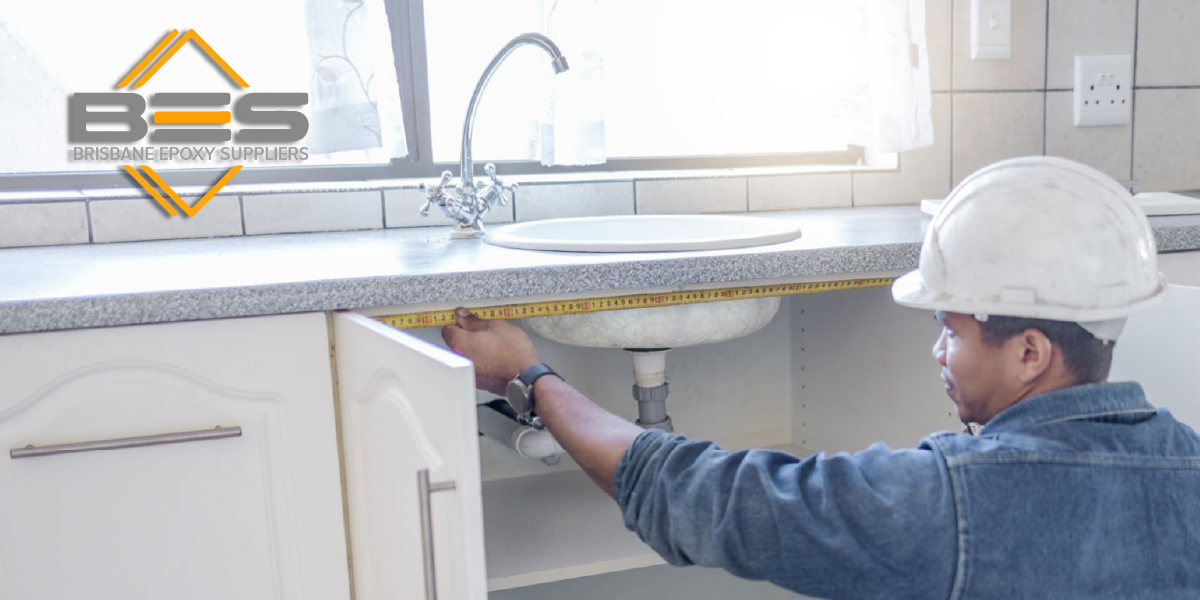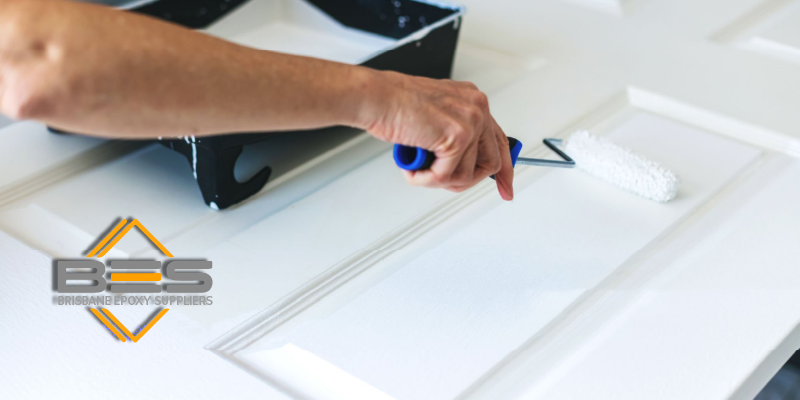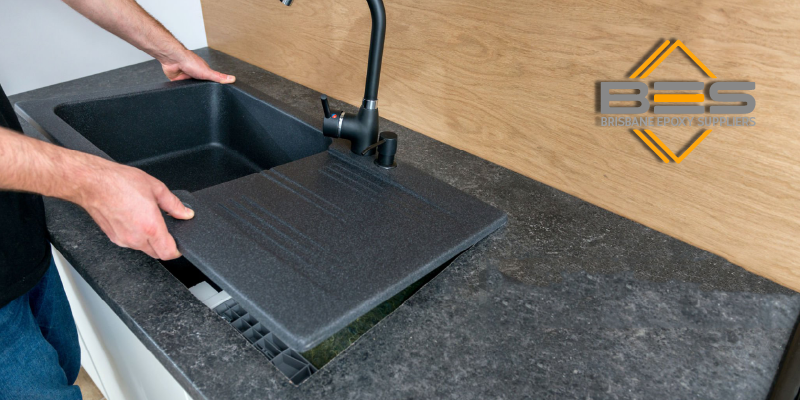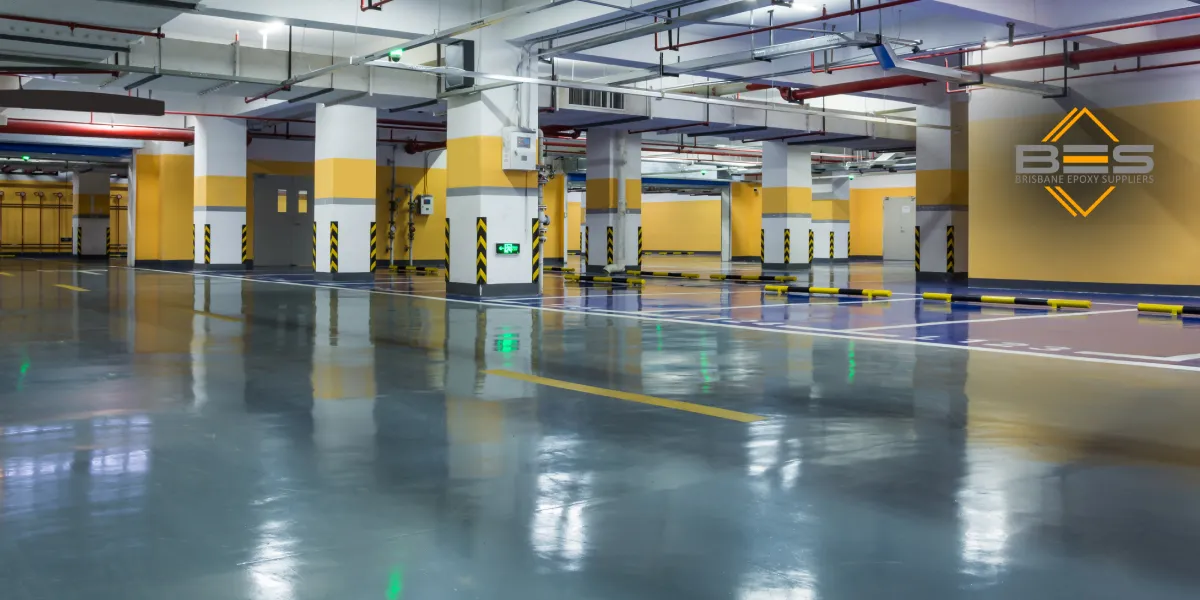How to Use Epoxy Paint for Kitchen Cabinets: A Step-by-Step Guide

Is it even possible to use epoxy paint for kitchen cabinets? The answer is a big YES! If you are searching for a way to enhance the aesthetic appeal and functionality of your kitchen cabinets, epoxy paint offers a durable, glossy, and smooth finish.
Therefore, if you are about to revamp the kitchen cabinets, this complete guide will delve into the suitability of different cabinet types for epoxy paint, the best epoxy paints available, the detailed application process, essential tools and materials, and how to overcome common challenges.
Is Epoxy Paint Good for Kitchen Cabinets?
The answer is yes. However, under certain circumstances. You can apply epoxy paint to a variety of cabinet materials, but it’s necessary to know which ones will yield the best results. The following are the best materials for epoxy paint to be applied to.

1- Wooden Cabinets
Epoxy paint works well with wood kitchen cabinets, and you can easily use epoxy to paint them. Whether your kitchen cabinets are made of solid wood or MDF (Medium Density Fiberboard), you can use epoxy paint on them. Do not forget that you need to learn how to properly use the epoxy.
2- Laminate Cabinets
Since laminate cabinets have a smooth surface, it can be difficult for epoxy paint to adhere. However, you can still apply the epoxy paint with the appropriate primer. Using the right primer is necessary, otherwise, the paint may not adhere well and may peel or flake off.
3- Melamine Cabinets
You can also use epoxy paint on melamine cabinets. Since kitchen cabinets see high traffic use daily traffic, using epoxy to paint the doors is one of the best ways to protect melamine surfaces. Epoxy paint can be sprayed or brushed, or rolled on like regular paint. The main difference between epoxy paint and other kinds of paint is that epoxy paint characteristics can last up to 10 years.
4- Metal Cabinets
It doesn’t matter if you want to use epoxy paint on residential kitchen cabinets or industrial kitchen cabinets; in both cases, you can benefit from the durability of epoxy paint. Remember that proper cleaning and priming are essential for the paint to stick.
5- Veneer Cabinets
It doesn’t matter if it’s a metal or veneer cabinet. Veneer cabinets usually have a thin layer of wood or laminate over a base material and have become very popular these days. You can also use epoxy paint on veneer cabinets, however, you have to be careful and use the best material to avoid peeling.
Essential Tools and Materials
Now that you have decided epoxy paint is the best option for durable and shiny kitchen cabinets, you need to prepare the necessary high-quality tools to use epoxy paint on kitchen cabinets tools and the materials to get the work done properly.
Tools
- Sandpaper (80-grit and 20-grit)
- Paint brushes
- Foam rollers
- Paint trays
- Drop cloths
- Painter’s tape (super tape)
- Safety goggles and gloves
- Respirator mask
Materials
-
Epoxy paint for cabinets: Choose a high-quality, durable epoxy paint designed for kitchen cabinets or wood surfaces. Typically comes as two components (resin and hardener) that must be mixed properly.
-
Epoxy primer: Essential for ensuring proper adhesion of epoxy paint, especially on laminate, metal, or other smooth surfaces.
-
Wood filler or putty: To repair holes, dents, or imperfections on the cabinet surface for a smooth finish.
-
Thinner or reducer (if needed): Some epoxy paints require thinning—follow manufacturer instructions carefully.
-
Protective gear: Safety goggles, gloves, and a respirator mask to protect yourself from fumes and chemicals.
Now that you’ve gathered all the necessary tools and materials, you need to learn how to prepare the cabinets for epoxy paint.
Prepare the Cabinets for Epoxy Paint
If you want to enjoy the smooth, long-lasting finish with epoxy paint, preparation is the key. Follow as below, and you will be amazed by the result.
Step 1: Unscrew and remove all cabinet doors, drawers, and hardware, and label each piece to ensure easy reassembly.
Step 2: You can use any suitable cleaning solution to remove grease, dirt, and grime. For a better result, you can use trisodium phosphate (TSP).
Step 3: For removing the existing finish and creating a rough texture for the primer to adhere to, you can use 80-grit sandpaper.
Step 4: If you see any holes, dents, or imperfections on the surface, use a wood filler and allow it to dry completely. For the best result, you can buy Uni-Pro trade range sausage caulking gun – 600ml for every necessary use. Then sand the surface smooth with 220-grit sandpaper.
Step 5: At this stage, apply a primer suitable for your cabinet material (wood, laminate, metal, etc.) and let it dry properly. Read the manufacturer’s instructions to estimate the time correctly.
Common Challenges and the Best Way to Overcome Them
Along the way of applying epoxy paint for kitchen cabinets, you may face some problems and challenges. Here is a complete list of common challenges and how to overcome them.
1- Bubbles in the paint
Cause: If the epoxy is mixed too quickly or if there is air trapped in the paint, you will see bubbles in the epoxy.
Solution: To tackle this problem, you just need to mix the epoxy slowly and carefully. Use a heat gun to gently pass over the surface to remove bubbles.
2- Uneven Finish
Cause: Improper sanding or applying too thick a coat of paint can cause an uneven finish. Remember that an uneven finish doesn’t offer an appealing sight, and you have to prevent it from happening.
Solution: Sand between coats and apply thin, even layers.
Steps to Apply Epoxy Paint to Kitchen Cabinets
For a flawless epoxy paint finish on your kitchen cabinets, you only need to gather these materials and follow these steps.
1. Mix the Epoxy Paint
You need to mix the resin and hardener in a suitable bucket just according to the manufacturer’s instructions. Use disposable mixing cups and stir sticks for accurate measurement and thorough mixing. For a better result, you can use an epoxy mix gun. The epoxy mix gun is a dual-component applicator for precise epoxy mixing and application.
2. Apply the First Coat
For applying the first coat, you can use an epoxy application twin roller. It will help you apply a thin, even layer of epoxy resin. If there’s a corner or edge that the roller cannot reach, simply use a brush. Just make sure that the first coat covers the entire area.
3. Let it Dry
After applying the first coat, allow it to dry completely before you proceed to the next level. It typically takes 24 hours. You can also check the manufacturer’s guidelines for specific drying times. But make sure that the first coat is completely dry, then move to the next step.
4. Sand Between Coats
If you want to ensure adhesion of the next coat of epoxy resin, use a 220-grit sandpaper to lightly sand the surface. For a glossy and even surface, you should wipe away dust with a tack cloth. Sanding between coats is necessary, as it ensures better adhesion of the net coat.
5. Apply additional Coats
Apply a second coat of epoxy paint, again in thin, even layers. You can repeat the process until you achieve the desired coverage and finish. Usually, 2-3 coats are necessary for a soft and smooth surface.
For the final stage, you have to allow the final coat to cure fully, which can take up to a week depending on the epoxy paint used.
6. Reassembling the Cabinets
Do not reassemble your cabinets after the paint is fully cured. Reattach the cabinet doors and hardware as it was before. Make sure that all the pieces are securely fastened and aligned. Now you just need to enjoy the new look on your cabinets.
Is Epoxy Paint for Kitchen Cabinets a Good Choice?
If you are about to revamp your kitchen cabinets, epoxy paint offers an excellent solution. It provides a durable, glossy, and easy-to-clean finish, and you don’t have to worry about cleaning your cabinets anymore. By following the right preparation and application steps, you can achieve professional-looking results that will transform your kitchen. With the right tools, materials, and a bit of patience, you’ll enjoy a fresh, updated kitchen space for years to come.
Conclusion:
Epoxy paint is an excellent choice for transforming your kitchen cabinets. It provides a glossy, durable finish that lasts for years, enhancing both the aesthetic appeal and functionality of your kitchen. By following the right preparation and application steps, you’ll achieve professional results that can dramatically change your kitchen. With the right tools and a little patience, you’ll enjoy a fresh, updated look for your cabinets long-term.













